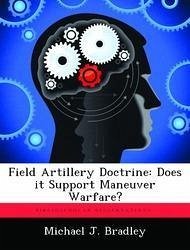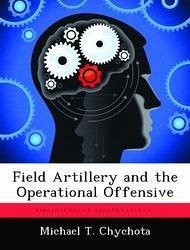
Field Artillery Doctrine
Does it Support Maneuver Warfare?
Versandkostenfrei!
Versandfertig in über 4 Wochen
14,99 €
inkl. MwSt.

PAYBACK Punkte
7 °P sammeln!
This study examines the relationship of current U.S. Field Artillery Doctrine to the concept of maneuver warfare. The impetus for the work is the generally poor results of fire support at the National Training Center (NTC). The purpose is to determine what, if anything, is wrong with FA doctrine. The analysis begins with an examination of the Relative Combat Power Model which relates the combat elements of maneuver, firepower, protection, and leadership. This model is the backdrop for the remainder of the study which looks at the Army's experience at the NTC, the Arab-Israeli wars of the last ...
This study examines the relationship of current U.S. Field Artillery Doctrine to the concept of maneuver warfare. The impetus for the work is the generally poor results of fire support at the National Training Center (NTC). The purpose is to determine what, if anything, is wrong with FA doctrine. The analysis begins with an examination of the Relative Combat Power Model which relates the combat elements of maneuver, firepower, protection, and leadership. This model is the backdrop for the remainder of the study which looks at the Army's experience at the NTC, the Arab-Israeli wars of the last twenty years, and evolving artillery doctrine. The study concludes that the maneuver and fire support communities are at odds over the adequacy of artillery doctrine due to a shared misconception of the relationship between maneuver, firepower, and protection. Each fails to recognize that the elements of combat power are, at times, at odds with each other. This relationship requires that the leader synchronize all warfighting assets in a combined arms approach. Until all parties accept this notion, the Army runs the risk of basing doctrinal changes on a faulty premise. This work has been selected by scholars as being culturally important, and is part of the knowledge base of civilization as we know it. This work was reproduced from the original artifact, and remains as true to the original work as possible. Therefore, you will see the original copyright references, library stamps (as most of these works have been housed in our most important libraries around the world), and other notations in the work. This work is in the public domain in the United States of America, and possibly other nations. Within the United States, you may freely copy and distribute this work, as no entity (individual or corporate) has a copyright on the body of the work. As a reproduction of a historical artifact, this work may contain missing or blurred pages, poor pictures, errant marks, etc. Scholars believe, and we concur, that this work is important enough to be preserved, reproduced, and made generally available to the public. We appreciate your support of the preservation process, and thank you for being an important part of keeping this knowledge alive and relevant.












